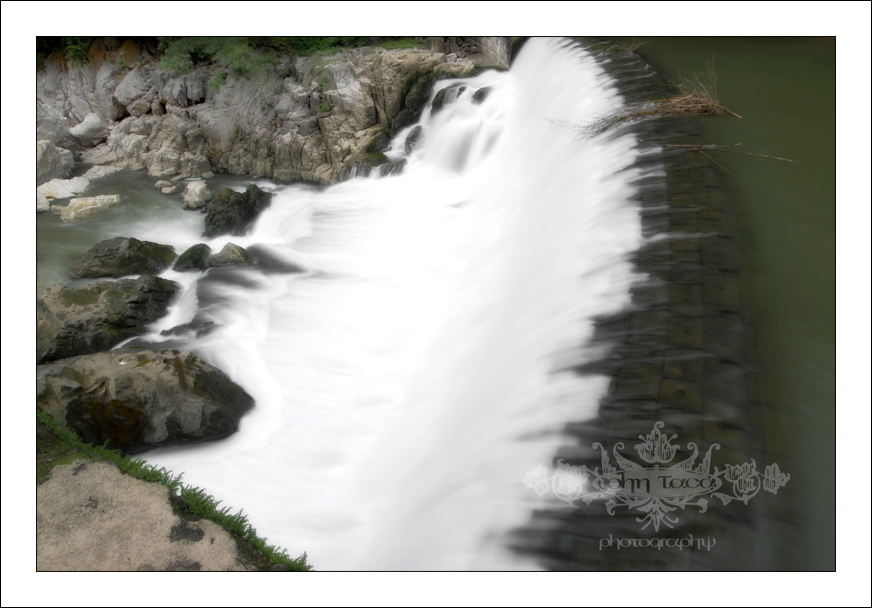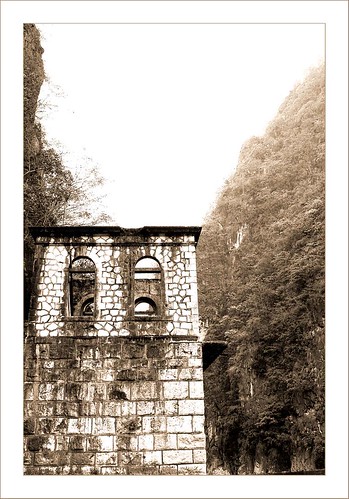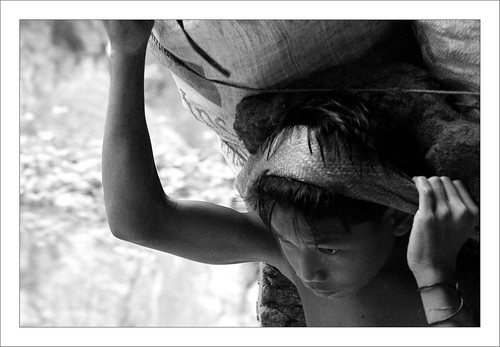This is my third visit to Wawa Dam, Montalban and Im still amazed at the place’s natural and historical richness. The deep gorge below the main falls where large boulders split the stream, the thundering noise of white water crashing down to the bottom from the top of the dam, the river lined with hills on both sides and of course the friendly local folks living along the trail going up to the dam are some of the splendors only Wawa can bestow to its guests. The main attractions of course are the Spanish era 1800s (best guess) structures: the roughly 100 foot stone brick dam, the dam control stone brick tower and the man made tunnels bored at the sides of the hills to allow folks to access the dam by foot. These are some of its gems but every visitor will surely find their own to add to the list.
One can only go so far to paint a picture of Wawa using words. You have to be there to capture and experience it! These pictures somehow try to capture some visual gems of the place but they are merely made for seeing. Traveling per se is so popular because of its a multi-dimension sensory experience. Going to Wawa is no exception; it will not disappoint.



All About Fish-ball Sticks
One of Wawa’s striking features are its people. Although the dam was built with considerable technology during its time the people of Wawa seem to have stagnated in terms of development. The place is still rural community than anything else. Its locals lack most if not all of today’s conveniences. I doubt if they have sufficient plumbing, sewerage and electricity; they live in shanties after all.
As you navigate the trail to the Dam what captures your interest is its people. They are friendly and yet will look at you with curiosity. What struck me however are the local working folks. I admit that I’ve only really noticed them beginning with my second trip to the place. As you ascend the narrow rocky and uneven trail you inevitably cross paths with young adults, the elderly and children carrying sacks on their backs that look like a mountaineer’s full sized back pack. Instead of carrying the load on their shoulders however, its carried on their backs, head and balanced against a band on the top of their head (see inset).

I've seen some carry sacks loaded with coal. On my last visit they were carrying cut bamboo pieces in very large sacks. I tried to carry them by lifting it with one arm and the sack hardly budged. I used to be able to bench 200+ pounds back in the day. Sacks (inset) are packed with cut bamboo pieces and are soaked in water hence their heavy weight. The 6 inch planks will further be cut into sticks to be used as “fish ball” or barbeque skewers/ sticks.
 Those who move them transport them by raft from 2-3 mountains away via a bamboo boat that operates like a gondola. They are then off-loaded to a riverbank and loaded to the backs of the young men, elderly and children. They get paid for each pack they deliver from pick-up to the delivery point . I reckon they don’t get paid a lot judging from the type demographic of the workers. As I photographed them I’ve watched them flex their whole body with their veins on their necks and arms stretching as if they were about to burst. They seem to be mildly amused by my presence but choose not to be distracted because it was already 4:00pm then and they still needed to fetch and deliver about 4 boatloads of sacks before nightfall about 6:00pm.
Those who move them transport them by raft from 2-3 mountains away via a bamboo boat that operates like a gondola. They are then off-loaded to a riverbank and loaded to the backs of the young men, elderly and children. They get paid for each pack they deliver from pick-up to the delivery point . I reckon they don’t get paid a lot judging from the type demographic of the workers. As I photographed them I’ve watched them flex their whole body with their veins on their necks and arms stretching as if they were about to burst. They seem to be mildly amused by my presence but choose not to be distracted because it was already 4:00pm then and they still needed to fetch and deliver about 4 boatloads of sacks before nightfall about 6:00pm.
I followed them to document how they mount, carry and move the packs. I just shook my head how the littlest of them manage to even carry those sacks and travel even a minute on very rough terrain. Travel by foot to the delivery point is about 15 minutes away.
One of them asked in Filipino: “what will happen to the pictures?” I presumed they wanted to see themselves in prints so I told them I'll leave copies to the neighborhood tourism office for them get copies.
He wasn’t interested. He remarked instead: “Send them to Gloria (Philippine president) instead so that she may know our (dire) condition here.”
If anyone can forward this to the right agency local or foreign who may be able to HELP (perhaps through technology grants and livelihood programs but at the same time not disrupt their way of life in a sense) please do.










2 comments:
Irony nga Master JE, pero think about this naka motorboat sila next time? baka mawawala na yun richness ng wawa hehehe
thanks for the comment eds. tama ka.
i was just thinking they can create a cable network to slide/ glide the sacks to their destination.
Its better if they stop and change livelihoods which is better for the environment too. we can alwaya use toothpicks to eat fish-balls and squid balls =D
Post a Comment